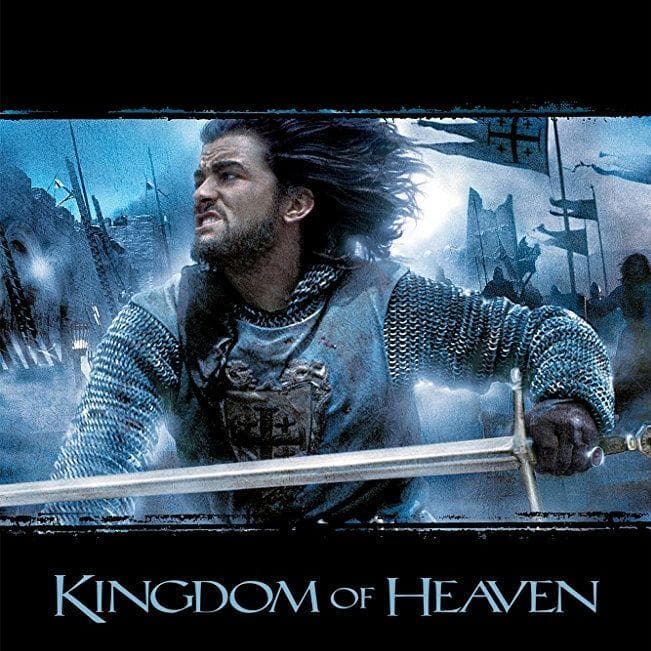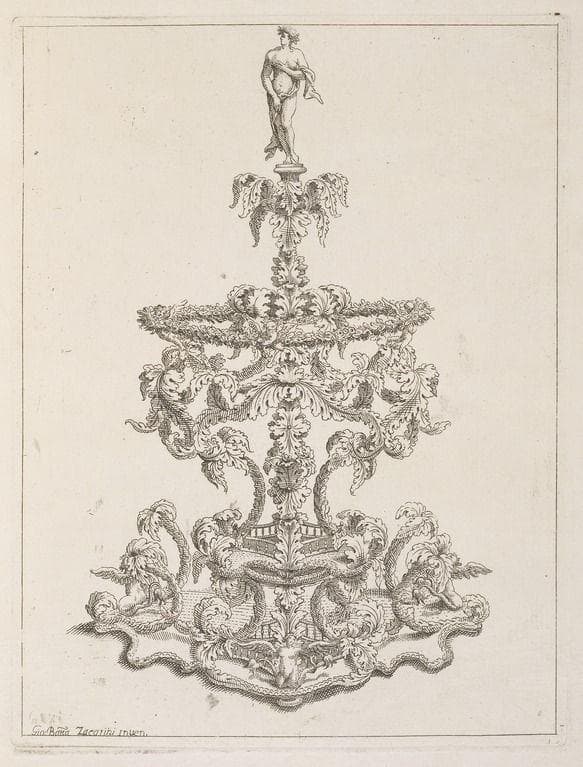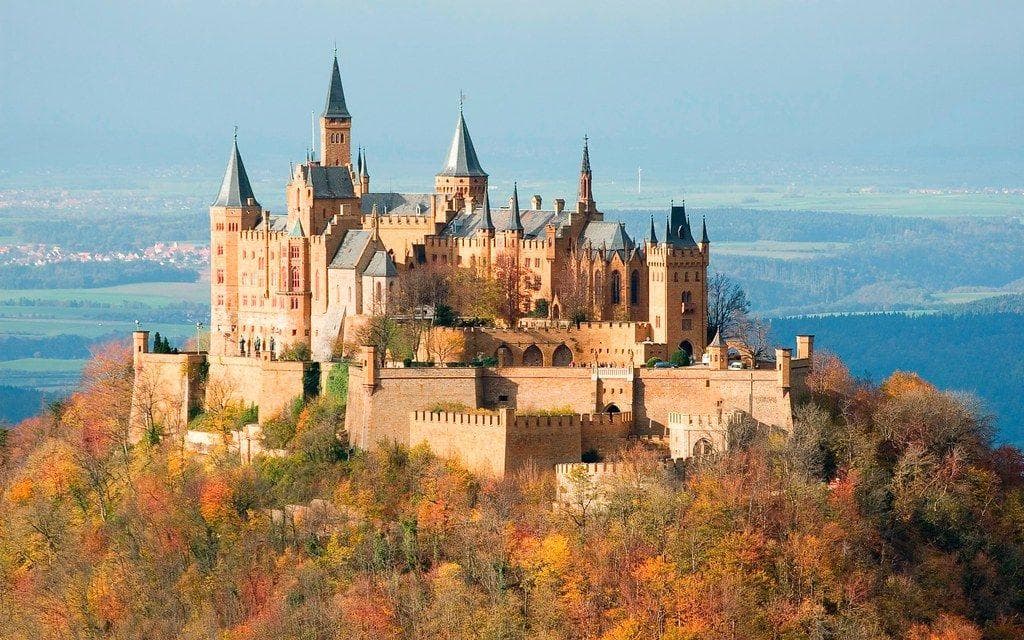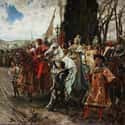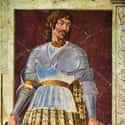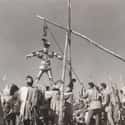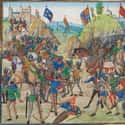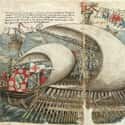-
(#1) MYTH: Stone Castles Were Common Throughout The Middle Ages
The Reality: The classic image of a medieval stone castle was only popularized in continental Europe after the 11th century. A wide variety of fortifications were used throughout the Middle Ages, included fortresses built into caves, clay fortresses in Spain, and brick castles in Eastern Europe.
Why the Myth: Medieval writers used many different words to refer to structures, many of which were translated as "castle." More than likely, some of the castles medieval writers referred to were simply small towns with clay or brick walls. One of the most commonly used terms was "chastel," which could mean either a single fortified building or a walled-in town.
-
(#2) MYTH: There Was No Mercy
The Reality: Mercy in armed engagements during the Middle Ages was largely subject to the character of the victorious leader. However, many recorded incidences of merciful conduct, particularly between Christian forces, exist from the time. Orderic Vitalis, a chronicler and monk, wrote of an engagement between the English and the French:
They were all clad in mail and spared each other on both sides, out of fear of God and fellowship in arms... they were more concerned to capture than [vanquish] the fugitives. As Christian [men], they did not thirst for the blood of their brothers, but rejoiced in a just victory given by God for the good of Holy Church and the peace of the faithful.
Why the Myth: This is another example of sensationalism in historical writing. The most gripping moments in medieval conflicts tend to be the most brutal, and so bloody fights like the Crusader attack on Jerusalem or the Battle of Hastings are remembered most prominently. However, that doesn't mean that vicious, merciless battles were commonplace. Most battles were smaller and low-stakes, which made mercy more probable.
-
(#3) MYTH: Full-Body Armor Was Reserved For The Wealthy
The Reality: Heavy cavalry such as knights were a key component of any medieval fighting force; however, no rules prohibited foot soldiers from wearing armor. Indeed, troops were responsible for acquiring their own armor, so any man with the means likely had at least a helmet or a chainmail shirt. Wealthier warriors - such as men of the new and rising middle class - could outfit themselves however they liked, although a full suit of armor would have been difficult to maintain for an infantryman.
Why the Myth: In part, this myth originates from Hollywood. However, the original notion is also based on misconceptions about class in the medieval world. A commonly held myth is that people were either lords, knights, or peasants. All infantrymen were thought to be peasants who couldn't afford armor, which gave rise to the myth.
-
(#4) MYTH: Knights Were Chivalrous By Nature
The Reality: A knight was just an armored man with a blade. A code for knightly conduct was developed throughout the 11th and 12th centuries, specifically because knights were incredibly brutal and bowed to no laws. The Church attempted to curtail these tendencies after the attack on innocent civilians in Constantinople during the Fourth Crusade - and this was far from the first time knights had committed such atrocities during the course of their campaigns.
Why the Myth: In part, the "chivalric" code developed because the Church was trying to impose rules on wayward knights. The romantic literature of this era further developed the idea, giving rise to some of the notions about knightly conduct many people believe now. Unfortunately, romantic stories are often confused with knights' actual behavior.
-
(#5) MYTH: The Crusades Were An Entirely Undisciplined Rampage
The Reality: In the 12th century, a Muslim writer named Usama ibn Munqidh wrote, "Of all men, the Franks are most cautious in warfare." While it's true that certain moments during the Crusades were mass eliminations, such as the sack of Constantinople, much of the era's conflict was very cautious. Both Muslim and European forces avoided open conflict instead of focusing on raiding towns or capturing cities and fortresses.
Why the Myth: Certain moments in the Crusades are often emphasized because they are especially salacious or brutal. The sack of Constantinople and the storming of Jerusalem are certainly exciting moments soaked in blood, but they aren't representative of the day-to-day conflicts that ultimately decided the outcome of the various Crusades.
-
(#6) MYTH: Cavalry Were Only Used For Heavy Charges In Decisive Engagements
The Reality: An important function of mounted cavalry units was to perform small-scale raids alongside larger operations. These raids, called chevauchee by the French, were focused on wiping out infrastructure, disrupting supply lines, and frightening local forces and civilian populations. As medieval scholars have downplayed the importance of large-scale, "all-or-nothing" engagements, they have increasingly emphasized this type of smash-and-grab raiding.
Why the Myth: In the Victorian era, the history of the heavy cavalry charge was a staple in training courses. Large cavalry movements in big battles were taught as a way of instilling discipline and an attitude of self-sacrifice to young recruits. This romanticized view of armed conflict continued for hundreds of years, until medieval scholars began researching primary sources that challenged the orthodox view.
-
(#7) MYTH: Knights Were The Dominant Force Throughout The Middle Ages
The Reality: While various forms of heavy cavalry were indispensable in most medieval engagements, there was another innovation that changed medieval conflict: the longbow. Primarily known as the English weapon of choice during the Hundred Years' War, the longbow was used for a variety of tactical purposes. For example, a large group of longbowmen could be used to prevent the enemy from spreading out and flanking a cavalry charge.
Why the Myth: The longbow is sometimes mentioned in connection with the Battle of Agincourt (although its role there has been disputed), but its importance throughout the Hundred Years' War - in battles like Sluys, Crecy, and Poitiers - is rarely appreciated. While it did not replace the cavalry charge as an important maneuver, it completely rewrote history, giving England a string of victories and reshaping the political maps of Europe for generations.
-
(#8) MYTH: All Combatants Belonged To A Nation Or State
The Reality: Mercenaries were plentiful in the medieval world, although they are most closely associated with the small city-states of 13th-century Italy. These states didn't possess the manpower to field troops of their own, but they were wealthy enough to pay for powerful hired companies. These professional troops, comprised of men from all over Europe - former warriors, deserters, lifelong sellswords, and the like - had to travel to wherever the conflict was taking place. They played a significant role in the Hundred Years' War between England and France.
Why the Myth: This myth can be traced back to the way medieval history was taught during nationalist periods in Europe. Historians, in examining the large-scale motions of history, tend to emphasize nations and countries, because that is how we view the world today. However, medieval Europe can be better understood as a series of fiefdoms of various sizes. Many nations, like Italy and Germany, did not exist as we understand them today.
-
(#9) MYTH: Knights Used Primitive Cranes To Mount Their Horses
The Reality: When Laurence Olivier made his film Henry V, he included a scene in which a primitive crane lifts an armored knight onto a horse. His historical advisors objected to this scene, however, as no evidence exists that such a device was necessary. An entire suit of armor weighed approximately 55 pounds, which is less than many modern servicemen carry into combat.
Why the Myth: In this particular case, Olivier's movie is probably most responsible for the widespread myth, and he never mentioned why he felt the scene was necessary. Several mentions of similar practices existed before Olivier, but they seemed to have begun as a joke.
-
(#10) MYTH: There Were No Pacifists
The Reality: Most authorities in the Middle Ages, including the Church, saw conflict as not only inevitable, but also as glorious and good. Still, some strong pacifist voices persisted. Some of these were silenced, but others left behind records of a growing anti-militarism towards the end of the medieval era. These included an English theologian named John Wyclif and St. Francis of Assisi, both of whom argued passionately against armed conflict.
Why the Myth: During this era, fringe voices were often condemned by the government and silenced by the chroniclers. Even the Church played a part in this censorship, often condemning pacifist groups as heretical and excommunicating them. However, despite the rampant glorification of warriors throughout the medieval era, strong opposing voices remained, denouncing any and all armed conflict - even the Crusades.
-
(#11) MYTH: Attacking Forces Scaled Castle Walls And Broke Down The Gates During Seiges
The Reality: Taking most castles and fortifications by force without losing vast numbers of troops was incredibly difficult. More often than not, invading forces would simply surround a castle, ensure no supplies got in or out, and wait for the defenders to starve. This was often a long, grueling process, and sometimes invaders would employ psychological tactics like promising clemency or hurling human remains into the castle.
Why the Myth: When writing a medieval epic, a Hollywood screenwriter is intent on telling the most entertaining story possible. Troops camping out for weeks on end is hardly conducive to thrilling, blockbuster action, so many movies about the Middle Ages increased the excitement in order to tell a compelling story.
-
(#12) MYTH: Knights Were Motivated By Love For King And Country
The Reality: Like warriors throughout the centuries, many medieval knights attributed their motivation to their comrades-in-arms. Jean V de Bueil, a 15th-century French knight, wrote:
It is a joyous thing, war... You love your comrade so much... A great sweet feeling of loyalty and of pity fills your heart on seeing your friend so valiantly exposing his body... And then you are prepared to go and live or [perish] with him, and for love not to abandon him. And out of that, there arises such a delectation, that he who has not experienced it is not fit to say what delight is. Do you think that a man who does that fears [his own end]?
Why the Myth: Our perceptions of medieval chivalry are often shaped by the stories written after the fact. Many of the most influential stories about medieval knights were written during times of great nationalism, so they naturally emphasize devotion to country over all. To this day, seperatist and nationalist groups across the world use medieval and knightly imagery in their movements.
-
(#13) MYTH: Medieval Troops Were Heavily Armed And Armored
The Reality: As with conflict throughout the ages, different forces in the Middle Ages conducted battle differently. The large, unwieldy forces of the major powers might well have been heavily armed. For example, when the English fought the French, they were dealing with a fairly conventional type of conflict. However, when their heavily armed and armored troops took on the Welsh, they were faced with a band of guerilla fighters who raided their supply lines and picked off small groups.
Why the Myth: Simply because there were so many skirmishes during this period, history books tend to focus on massive campaigns between great powers. Decades-long conflicts are often boiled down to one big, decisive engagement. While this perception may help simplify the events of the Middle Ages to a digestible level, it is largely inaccurate.
-
(#14) MYTH: All Battles Were Fought On Land
The Reality: The lack of technological progress in the Middle Ages meant that most maritime skirmishes were fought in the same manner as those in the Roman era. Ships would use projectiles to pick off sailors before grappling and boarding the ship and engaging in hand-to-hand combat. This method of engagement also kept many ships intact, to be taken by the winning side.
Why the Myth: Because ships were difficult to sink, few large-scale maritime fights occurred during this era. Most conflicts revolved around securing waterways to transport troops. This was especially true in the case of the Crusades, where piracy became a serious issue for the Crusaders as they attempted to travel by sea to the Middle East. However, this rarity makes these conflicts difficult to contextualize for historians, since maritime skirmishes were almost always ancillary to larger ground conflicts.
New Random Displays Display All By Ranking
About This Tool
Our data comes from Ranker, If you want to participate in the ranking of items displayed on this page, please click here.






